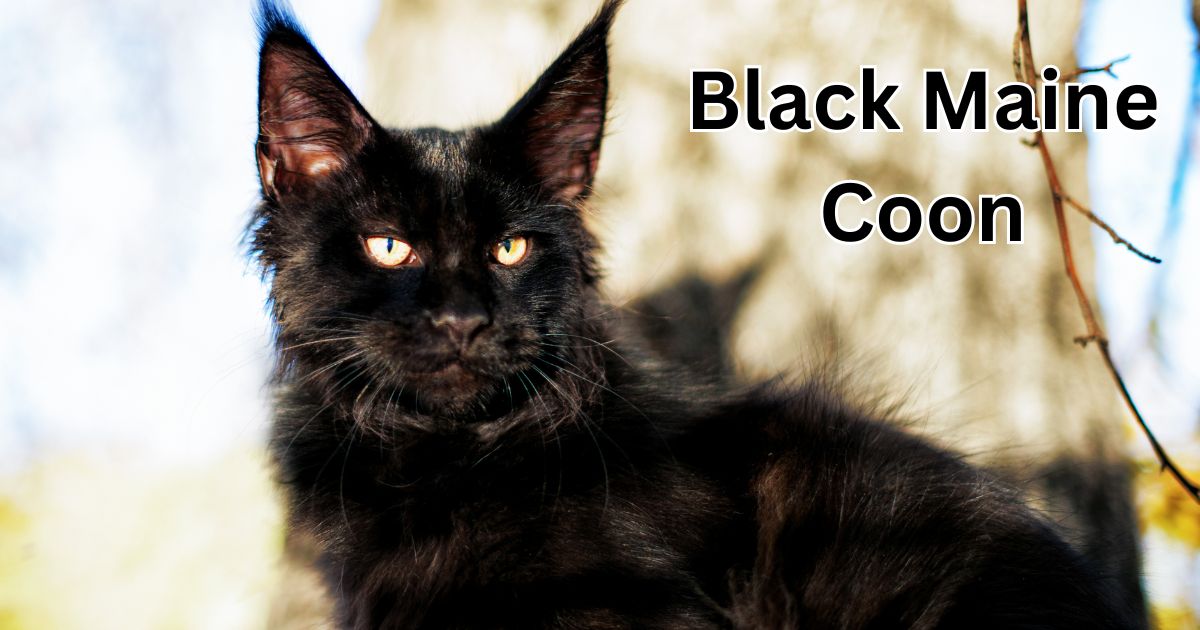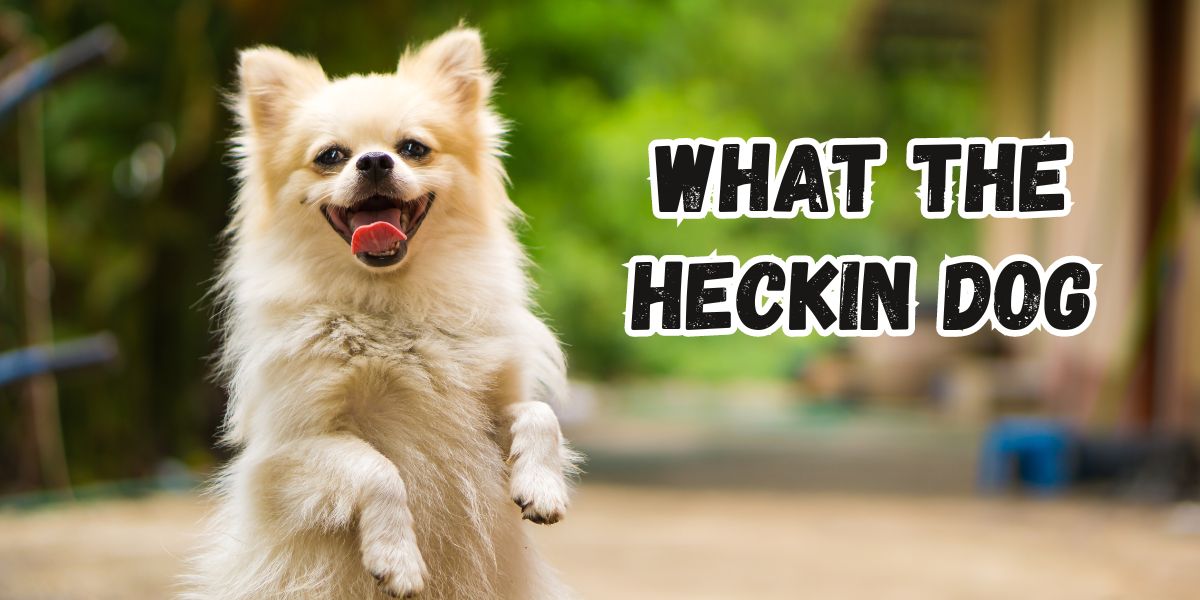The Pitsky, a unique hybrid dog, results from crossing a Pit Bull Terrier with a Siberian or Alaskan Husky. This breed combines the best traits of both parents, resulting in a loyal, intelligent, and energetic companion. Pitskies are medium to large-sized dogs with muscular builds, often inheriting the striking blue eyes of the Husky and the solid frame of the Pit Bull. Their coats can vary, featuring short to medium-length hair in a wide range of colors and patterns.
Proper care is crucial for Pitskies to thrive and lead healthy, happy lives. Given their high energy levels and unique temperament, Pitskies require a balanced diet, regular exercise, and consistent training. Neglecting these needs can lead to behavioral issues, health problems, and an overall decrease in the dog’s quality of life. By following a comprehensive care guide, owners can ensure their Pitskies remain well-adjusted and healthy.
A detailed care guide helps owners navigate the complexities of raising a Pitsky. It provides valuable insights into the breed’s specific needs, from nutritional requirements to exercise regimens. Additionally, a care guide can offer practical tips for training, grooming, and socializing, making it easier for owners to build a strong bond with their pets. Ultimately, a well-cared-for Pitsky is a joy to have, contributing positively to the household.
Understanding the Pitsky
Origins and History
The Pitsky is a relatively new designer breed, gaining popularity in recent years. The intentional crossbreeding of Pit Bulls and Huskies aims to combine the best attributes of both breeds: the loyalty and strength of the Pit Bull with the intelligence and endurance of the Husky. While not recognized by major kennel clubs, Pitskies have found their place in many homes, appreciated for their unique qualities.
Physical Characteristics
Pitskies typically weigh between 30 to 70 pounds and stand 18 to 24 inches tall at the shoulder. Their appearance can vary widely, reflecting the diverse genetics of their parent breeds. Common features include a muscular build, erect or semi-erect ears, and a mix of coat colors and patterns. Their eyes are often a standout feature, with some Pitskies inheriting the striking blue eyes of the Husky.
Temperament and Personality Traits
Pitskies are known for their friendly and affectionate nature. They are highly social dogs that thrive on human interaction and can be very protective of their families. Their intelligence and eagerness to please make them relatively easy to train, though they can also exhibit stubbornness at times. Pitskies are energetic and playful, requiring ample physical and mental stimulation to prevent boredom and destructive behavior.
Preparing for a Pitsky
Choosing the Right Pitsky for Your Home
When selecting a Pitsky, consider factors such as your living situation, lifestyle, and experience with dogs. Pitskies are best suited for active households with ample space for them to roam and play. They are not ideal for first-time dog owners due to their high energy levels and training needs. Additionally, it’s essential to choose a reputable breeder or rescue organization to ensure you adopt a healthy, well-socialized puppy or adult dog.
Setting Up Your Home for a Pitsky
Preparing your home for a Pitsky involves creating a safe, comfortable environment that meets their needs. Ensure you have a designated area for your dog to sleep, eat, and play. Baby gates can help section off areas of the house, preventing access to rooms or items that might be dangerous. Secure your yard with a sturdy fence to provide a safe space for your Pitsky to exercise and explore.
Essential Supplies for a Pitsky
Stock up on essential supplies before bringing your Pitsky home. This includes high-quality dog food, a sturdy leash and collar, food and water bowls, a comfortable bed, and plenty of toys to keep them entertained. Grooming supplies such as brushes, nail clippers, and dog shampoo are also necessary. Additionally, consider investing in training aids like a crate, training treats, and a clicker to facilitate the training process.
Nutrition and Diet
Understanding Pitsky Nutritional Needs
Pitskies require a balanced diet rich in proteins, fats, and carbohydrates to maintain their energy levels and overall health. Protein is crucial for muscle development and repair, while fats provide essential fatty acids and energy. Carbohydrates offer a quick energy source and fiber for digestive health. Vitamins and minerals are also necessary for various bodily functions, including immune support and bone health.
Best Foods for Pitskies
Choosing high-quality dog food is essential for your Pitsky’s health. Opt for foods that list meat as the primary ingredient, avoiding fillers like corn and soy. Both dry kibble and wet food can be suitable, depending on your dog’s preference and dietary needs. Consider incorporating fresh foods such as lean meats, vegetables, and fruits into their diet, ensuring they receive a well-rounded nutritional profile.
Feeding Schedule and Portion Control
Establishing a consistent feeding schedule helps regulate your Pitsky’s digestion and prevents overeating. Most adult Pitskies do well with two meals per day, while puppies may require three to four smaller meals. Portion control is crucial to prevent obesity, which can lead to various health issues. Follow the feeding guidelines provided by your chosen dog food brand and adjust portions based on your dog’s activity level and weight.
Homemade vs. Commercial Dog Food
Homemade dog food can be a healthy alternative to commercial options if prepared correctly. It allows you to control the quality and source of ingredients, ensuring a fresh and nutritious diet. However, it’s essential to consult with a veterinarian or canine nutritionist to ensure your homemade recipes meet all of your Pitsky’s dietary requirements. Commercial dog foods are convenient and often formulated to provide balanced nutrition, making them a practical choice for many owners.
Exercise and Physical Activity
Importance of Exercise for Pitskies
Regular exercise is vital for Pitskies to maintain their physical health and mental well-being. As a high-energy breed, Pitskies require ample physical activity to burn off excess energy and prevent behavioral issues. Without sufficient exercise, they can become bored, anxious, and potentially destructive. Consistent exercise routines help keep your Pitsky fit, healthy, and happy.
Daily Exercise Requirements
Pitskies need at least 60 to 90 minutes of exercise daily to stay healthy and content. This can include walks, runs, playtime, and interactive games. Splitting the exercise into multiple sessions throughout the day can help keep your Pitsky engaged and prevent overexertion. Tailor the exercise routine to your dog’s age, energy level, and overall health to ensure it is both safe and effective.
Fun Activities and Games for Pitskies
Incorporate a variety of activities to keep your Pitsky entertained and mentally stimulated. Fetch, tug-of-war, and agility training are excellent options that provide both physical and mental exercise. Puzzle toys and interactive feeders can challenge your Pitsky’s mind and prevent boredom. Regularly rotating toys and introducing new activities can help maintain their interest and enthusiasm.
Outdoor vs. Indoor Exercises
While outdoor exercise is ideal for Pitskies, indoor activities can also provide valuable stimulation, especially during inclement weather. Indoor agility courses, hide-and-seek games, and training sessions can help keep your Pitsky active. Outdoor activities such as hiking, running, and playing in a fenced yard offer more space and opportunities for exploration, contributing to your dog’s overall well-being.
Training Your Pitsky
Basic Training Tips
Effective training is essential for managing your Pitsky’s behavior and ensuring they become well-mannered companions. Start training early, using positive reinforcement techniques such as treats, praise, and play. Consistency is key; ensure all family members use the same commands and reward system. Focus on basic commands like sit, stay, come, and heel, gradually increasing the complexity of training as your Pitsky masters these skills.
Housebreaking Your Pitsky
Housebreaking a Pitsky requires patience, consistency, and positive reinforcement. Establish a regular schedule for bathroom breaks, taking your puppy outside frequently, especially after meals and naps. Use a designated potty area and reward your Pitsky immediately after they eliminate outside. Supervise your puppy indoors and confine them to a small area when unsupervised to prevent accidents.
Socialization Techniques
Socializing your Pitsky is crucial for developing a well-rounded, confident dog. Introduce your puppy to a variety of people, animals, and environments from an early age. Positive experiences during the critical socialization period (3-14 weeks) can help prevent fear and aggression issues later in life. Enroll in puppy socialization classes and arrange playdates with other dogs to enhance your Pitsky’s social skills.
Advanced Training for Pitskies
Once your Pitsky masters basic commands, consider advancing to more complex training. Advanced obedience classes, agility training, and trick training can provide additional mental stimulation and strengthen your bond with your dog. Consistent training and positive reinforcement can help address any behavioral issues and ensure your Pitsky remains well-behaved and responsive.
Grooming and Hygiene
Grooming Tools for Pitskies
Investing in the right grooming tools is essential for maintaining your Pitsky’s coat and overall hygiene. A sturdy brush, nail clippers, dog-specific shampoo, and ear-cleaning solution are fundamental items. Depending on your Pitsky’s coat type, you may also need a de-shedding tool or grooming rake to manage shedding and tangles effectively.
Bathing Your Pitsky
Regular bathing helps keep your Pitsky clean and healthy. Aim to bathe your dog every 4-6 weeks or as needed, depending on their activity level and coat condition. Use lukewarm water and a mild dog shampoo to avoid skin irritation. Thoroughly rinse the coat to remove all shampoo residue, and dry your Pitsky with a towel or blow dryer set to a low heat setting.
Brushing and Coat Care
Brushing your Pitsky’s coat regularly helps manage shedding, remove loose fur, and keep the coat healthy. Depending on the coat type, you may need to brush your Pitsky several times a week or even daily during shedding seasons. Regular brushing also allows you to check for any skin issues or parasites, ensuring prompt treatment if necessary.
Nail Trimming and Ear Cleaning
Regular nail trimming is essential to prevent overgrowth, which can cause discomfort and lead to injury. Trim your Pitsky’s nails every 3-4 weeks, using dog-specific nail clippers. Be cautious not to cut too close to the quick, which can cause bleeding. Ear cleaning should be done weekly to prevent infections. Use a gentle ear-cleaning solution and cotton balls to wipe the outer ear, avoiding the inner ear canal.
Health and Wellness
Common Health Issues in Pitskies
Pitskies can be prone to certain health issues inherited from their parent breeds. Common concerns include hip dysplasia, allergies, and eye problems. Regular veterinary check-ups and early detection can help manage these conditions effectively. Maintaining a healthy diet and exercise routine also plays a significant role in preventing many health problems.
Regular Vet Check-ups
Routine veterinary visits are crucial for monitoring your Pitsky’s health and catching any issues early. Schedule annual check-ups, during which your vet can perform a thorough physical examination, update vaccinations, and recommend preventive treatments. More frequent visits may be necessary for puppies, seniors, or dogs with specific health concerns.
Vaccination Schedule
Vaccinations are essential for protecting your Pitsky from various infectious diseases. Follow your vet’s recommended vaccination schedule, which typically includes core vaccines for rabies, distemper, parvovirus, and adenovirus. Non-core vaccines, such as those for Lyme disease or kennel cough, may also be recommended based on your Pitsky’s lifestyle and risk factors.
Preventative Care Tips
Preventative care involves proactive measures to maintain your Pitsky’s health. This includes regular grooming, dental care, parasite prevention, and maintaining a balanced diet and exercise routine. Additionally, keeping your Pitsky at a healthy weight and providing mental stimulation can significantly contribute to their overall well-being.
Mental Stimulation
Importance of Mental Stimulation
Mental stimulation is as important as physical exercise for Pitskies. Without sufficient mental challenges, they can become bored and develop destructive behaviors. Engaging your Pitsky’s mind helps prevent anxiety, keeps them entertained, and promotes overall mental health. Regular mental stimulation also enhances your dog’s problem-solving skills and reinforces positive behaviors.
Puzzle Toys and Interactive Games
Puzzle toys and interactive games are excellent tools for providing mental stimulation. These toys challenge your Pitsky to think and work for rewards, keeping them engaged and entertained. Food-dispensing toys, treat puzzles, and interactive feeders can turn mealtime into a mentally stimulating activity. Rotate these toys regularly to maintain your Pitsky’s interest and prevent boredom.
Training for Mental Agility
Training sessions are a great way to stimulate your Pitsky’s mind. Teaching new commands, tricks, and agility exercises can provide both mental and physical challenges. Advanced training, such as scent work or obedience competitions, can further enhance your dog’s mental agility. Consistent training also reinforces positive behaviors and strengthens your bond with your Pitsky.
Preventing Boredom in Pitskies
Preventing boredom is key to maintaining your Pitsky’s mental health. Provide a variety of toys, engage in regular training sessions, and incorporate interactive play into your daily routine. Additionally, ensure your Pitsky receives adequate physical exercise and social interaction. A well-stimulated Pitsky is less likely to develop destructive behaviors and more likely to be a happy, well-adjusted companion.
Pitsky Behavior
Understanding Pitsky Behavior Patterns
Pitskies inherit a mix of behaviors from their parent breeds. They are generally loyal, affectionate, and protective, but can also exhibit stubbornness and independence. Understanding these behavior patterns is crucial for effective training and management. Pitskies thrive on positive reinforcement and consistent routines, which help them understand expectations and reduce anxiety.
Managing Aggression and Anxiety
Some Pitskies may display aggression or anxiety, particularly if they lack proper socialization or training. Identifying triggers and addressing underlying issues is essential for managing these behaviors. Positive reinforcement, gradual desensitization, and professional training can help reduce aggression and anxiety. Providing a stable, loving environment also contributes to your Pitsky’s emotional well-being.
Positive Reinforcement Techniques
Positive reinforcement is the most effective training method for Pitskies. Reward desired behaviors with treats, praise, and play, while ignoring or redirecting unwanted behaviors. Consistency is key; ensure all family members follow the same training approach. Positive reinforcement not only promotes good behavior but also strengthens the bond between you and your Pitsky.
Building a Strong Bond with Your Pitsky
A strong bond with your Pitsky is built on trust, consistency, and positive interactions. Spend quality time with your dog, engage in regular training and play sessions, and provide a loving, stable environment. Respond to your Pitsky’s needs and communicate effectively to foster mutual understanding and respect. A strong bond enhances your Pitsky’s overall well-being and behavior.
Socialization
Benefits of Socializing Your Pitsky
Socializing your Pitsky is crucial for developing a well-adjusted, confident dog. Early and consistent socialization helps prevent fear and aggression, making your Pitsky more comfortable in various situations. Well-socialized Pitskies are generally friendlier, more adaptable, and better behaved, enhancing their quality of life and interactions with others.
Socialization Techniques and Tips
Effective socialization involves exposing your Pitsky to different people, animals, environments, and experiences in a positive manner. Start socialization early, ideally during the critical period of 3-14 weeks. Use positive reinforcement to reward calm and friendly behavior. Gradually increase exposure to new situations, ensuring your Pitsky feels safe and secure.
Introducing Your Pitsky to Other Pets
Introducing your Pitsky to other pets requires careful planning and patience. Begin with controlled, neutral territory meetings and supervise interactions closely. Use positive reinforcement to reward calm behavior and gradually increase the duration and frequency of interactions. Respect each pet’s boundaries and allow them to adjust at their own pace.
Handling Pitsky in Public Spaces
Handling your Pitsky in public spaces involves ensuring they remain well-behaved and comfortable. Use a sturdy leash and harness, and practice basic obedience commands to maintain control. Be mindful of your Pitsky’s body language and remove them from stressful situations if necessary. Positive experiences in public spaces enhance your Pitsky’s social skills and confidence.
Safety Tips
Creating a Safe Environment for Your Pitsky
Creating a safe environment for your Pitsky involves removing potential hazards and providing a secure, comfortable living space. Ensure your home and yard are free from toxic plants, chemicals, and sharp objects. Secure trash cans and food storage areas to prevent access. Provide a designated space for your Pitsky to rest and relax.
Recognizing Signs of Distress
Recognizing signs of distress in your Pitsky is crucial for addressing issues promptly. Common signs include excessive panting, drooling, pacing, whining, and destructive behavior. Changes in appetite, sleep patterns, or bathroom habits can also indicate distress. If you notice any of these signs, assess the situation and consult a veterinarian if necessary.
Handling Emergencies
Being prepared for emergencies is essential for your Pitsky’s safety. Keep a pet first aid kit and emergency contact numbers readily available. Familiarize yourself with basic first aid procedures, such as treating cuts and performing CPR. In case of a severe emergency, transport your Pitsky to the nearest veterinary clinic immediately.
Travel Safety Tips for Pitskies
Traveling with your Pitsky requires careful planning to ensure their safety and comfort. Use a secure crate or harness to restrain your dog during car rides. Ensure your Pitsky has access to water and regular bathroom breaks. Pack essential items such as food, medications, and familiar toys. Research pet-friendly accommodations and destinations to ensure a smooth trip.
Seasonal Care
Caring for Your Pitsky in Different Seasons
Seasonal changes can affect your Pitsky’s health and comfort. Adjust your care routine to accommodate different weather conditions. Provide adequate shelter and hydration during hot weather and protect your Pitsky from cold temperatures with appropriate clothing and shelter. Be mindful of seasonal allergens and environmental hazards.
Summer Care Tips
In summer, keep your Pitsky cool and hydrated. Provide plenty of fresh water and avoid strenuous activities during the hottest parts of the day. Create shaded areas in your yard and consider using cooling mats or vests. Never leave your Pitsky in a parked car, as temperatures can rise rapidly and pose a serious risk.
Winter Care Tips
In winter, protect your Pitsky from cold temperatures with warm clothing and limited exposure to the elements. Ensure they have a warm, insulated shelter and provide extra bedding. Avoid walking on icy surfaces that can cause injuries, and check your Pitsky’s paws for ice and salt accumulation. Adjust their diet to maintain energy levels during colder months.
Handling Seasonal Allergies
Seasonal allergies can affect Pitskies, causing symptoms such as itching, sneezing, and eye discharge. Minimize exposure to allergens by keeping your home clean, using air purifiers, and bathing your Pitsky regularly. Consult your veterinarian for appropriate allergy treatments and medications. Monitor your Pitsky’s symptoms and adjust their care routine as needed.
Conclusion
Owning a Pitsky is a rewarding experience that requires dedication and understanding. From their origins and physical characteristics to their unique behavioral traits, Pitskies are a fascinating breed mix. Proper training, socialization, and care are essential to ensure a happy, healthy, and well-behaved companion. By following the tips and guidelines provided in this comprehensive guide, you can build a strong, lasting bond with your Pitsky and enjoy many years of companionship.
FAQs
What is a Pitsky?
A Pitsky is a hybrid breed resulting from the crossbreeding of a Pit Bull and a Siberian Husky. They are known for their loyalty, intelligence, and high energy levels.
How much exercise does a Pitsky need?
Pitskies require at least 60-90 minutes of exercise daily. This can include walks, runs, playtime, and mental stimulation activities.
Are Pitskies good with children?
Pitskies can be good with children if properly trained and socialized. Always supervise interactions between dogs and young children to ensure safety.
What are common health issues in Pitskies?
Common health issues in Pitskies include hip dysplasia, allergies, and eye problems. Regular veterinary check-ups can help manage and prevent these issues.
How should I groom my Pitsky?
Grooming requirements vary depending on the coat type. Regular brushing, bathing every 4-6 weeks, and routine nail trimming and ear cleaning are essential.









